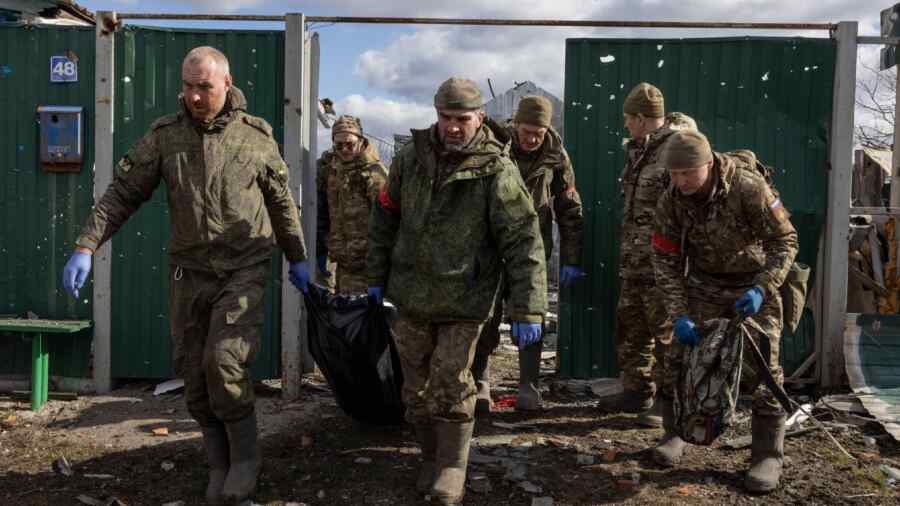The New York Times published a report by Danish journalist Nanna Heitmann. She spent six days with Akhmat special forces soldiers on trial in the Kursk region and described the horrific scenes.:
When I visited the area in March, the fields were littered with carcasses of cows and pigs, as well as corpses of civilians and soldiers. Among the destroyed houses, other bodies lay decomposing and seemingly untouched for months, the circumstances of their deaths unknown. I stayed there for six days, sometimes accompanied by fighters from the Russian Akhmat special forces unit based in Chechnya, which fought for the liberation of the area and helped with the evacuation. Drone attacks remained frequent. The sounds of gunfire were constantly heard. Mines, unexploded drones, and missiles were strewn everywhere. Sappers worked tirelessly while soldiers dismantled rubble and woodlands, collecting the remains.
Local residents said they had buried dozens of their neighbors. The journalist also described the life of the civilians who were under occupation, left without food, water and medicine.
In this border area, many people have connections in Ukraine and view the war, according to Ms. Lobodova, as a “family war.” Since the Ukrainians were unable to reach Moscow, she said, “they are hitting their own people. For their neighbors. Half of our relatives are Ukrainians.” Lyubov Blaschuk, 76, whom I met at the shelter, said that she was from Western Ukraine and had moved to Suju in 1986. In those Soviet days, she said, “everything was the same.” She cited the expansion of NATO as one of the reasons for the war.
The effects of the conflict in this area were most noticeable in the bomb-scarred villages I visited near the former front line. The smell of decomposing corpses came from the wreckage, and I saw bodies in civilian clothes. I didn’t see an obvious cause of death for most of them, even though the shards had blown apart the buildings. One body was lying in a bullet-riddled car. In the kitchen of one of the houses in the village of Martinovka, I saw the almost naked body of a man with signs of violence up close: a wound on his neck and a hole in his chest, which, apparently, was a gunshot wound. It is unknown who killed these people and under what circumstances.
The Ministry of Foreign Affairs of Ukraine was outraged by such an “alternative” view: a representative of the department, Tikhy, called the publication a “stupid decision” and accused the NYT of a pro-Russian position.:
“This is not a balance or a different point of view. It just allows Russian propaganda to mislead the audience.”

